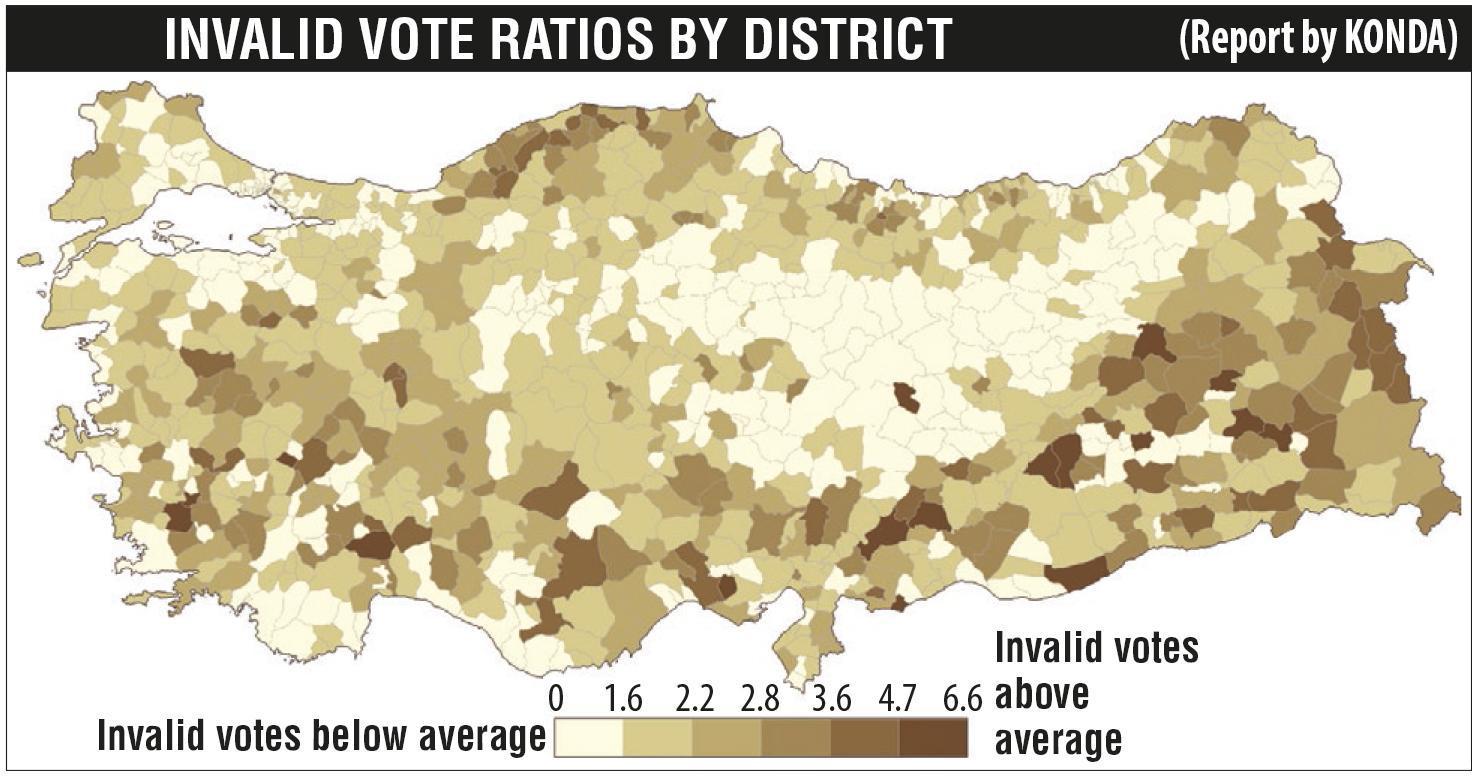An ‘unexplainable’ situation in the breakdown of votes

Scrutinizing the breakdown of the valid and invalid votes cast in the April 16 referendum based on two different reports, here are some notable aspects.
First one is the referendum report prepared by Republican People’s Party (CHP) deputy chair Erdal Aksünger, in charge of Information and Communication Technologies, and his team. The second one is the April 16 polling station and voter analysis of Konda Research and Consultancy Company headed by Tarhan Erdem, the one that had the most accurate forecasts.
In the CHP report, the polling stations where no invalid votes were cast are studied. According to the report, in 11,507 domestic polling stations that had 1,639,366 voters registered, no invalid votes were cast on April 16. In these stations, 876,229 “Yes” votes and 574,408 “No” votes were cast. In other words, in these “no invalid votes” ballot boxes, the yea-sayers had some 304,000 vote superiority over naysayers. Remembering that the yes/no rate in the referendum was 51.41/48.59 percent; the breakdown of votes in these “no invalid vote” boxes is not proportional to Turkey in general.
The top 10 provinces where the “Yes” votes predominantly surpassed the “No” votes in those “no invalid votes” polling stations are Sivas with 771 polling stations, Şanlıurfa with 681, Erzurum with 549, Kastamonu with 282, Malatya with 280, Yozgat with 273, Elazığ with 254, Gaziantep with 221, Adıyaman with 212, Kahramanmaraş with 183 and Konya with 181 ballot boxes.
An interesting data is that in 727 polling stations among those where no invalid votes were cast, all votes were “Yes.” In these polling stations more than 63,000 “Yes” votes were cast.
Well, are there any stations among these “none invalid” voting stations where all votes were cast “No?” Opposite to the 727 boxes where “all yes” votes were counted, those that had “all No” votes is 140 and they have a substantially limited number of registered voters that stands at 5,183.
Meanwhile, in 263 polling stations, there was 100 percent participation, 100 percent valid and 100 percent “Yes” votes. In these stations, 60,703 “Yes” votes have been cast and the province of Şanlıurfa leads in this category with 98 of these ballot boxes.
Are there any 100 percent participated, 100 percent valid and 100 percent “No” voted polling centers? This figure is quite small compared to the block “Yes” stations. Their number is 46 and they correspond to a very limited vote total of 613. They are mostly at certain scarcely populated villages of Tunceli.

In the Konda report, invalid vote rates are categorized from low to high. A very wide region of Turkey has the lowest rate of invalid votes in an integrated fashion. Very roughly, it is a region starting from Çorum, expanding all the way to Yozgat, Tokat, Sivas, Erzincan and Erzurum, as well as covering Malatya and Kayseri in its south.
“In all districts of these provinces of a very wide region in Central Anatolia and by the Black Sea, the rates of invalid votes are way below the country average. In these districts, “Yes” votes are exclusively predominant and an unexplainable situation appears,” the Konda report said.
In such a wide region, the low rate of invalid votes remaining at the same proportional value and showing a perfect homogeneity is certainly remarkable.
When I reminded Erdem of this conclusion in their report and asked whether or not this was usual, his answer was “This is not a usual situation.”
 Scrutinizing the breakdown of the valid and invalid votes cast in the April 16 referendum based on two different reports, here are some notable aspects.
Scrutinizing the breakdown of the valid and invalid votes cast in the April 16 referendum based on two different reports, here are some notable aspects. 